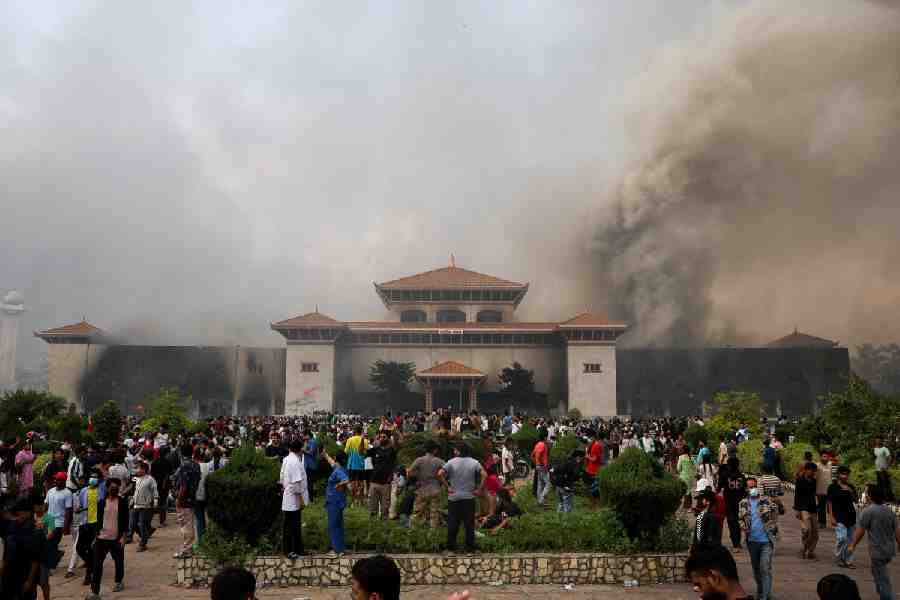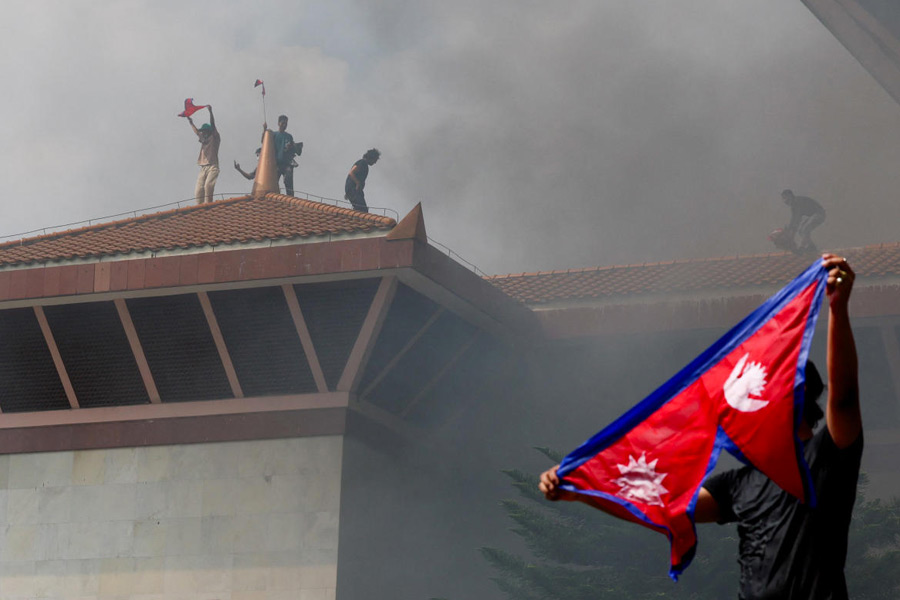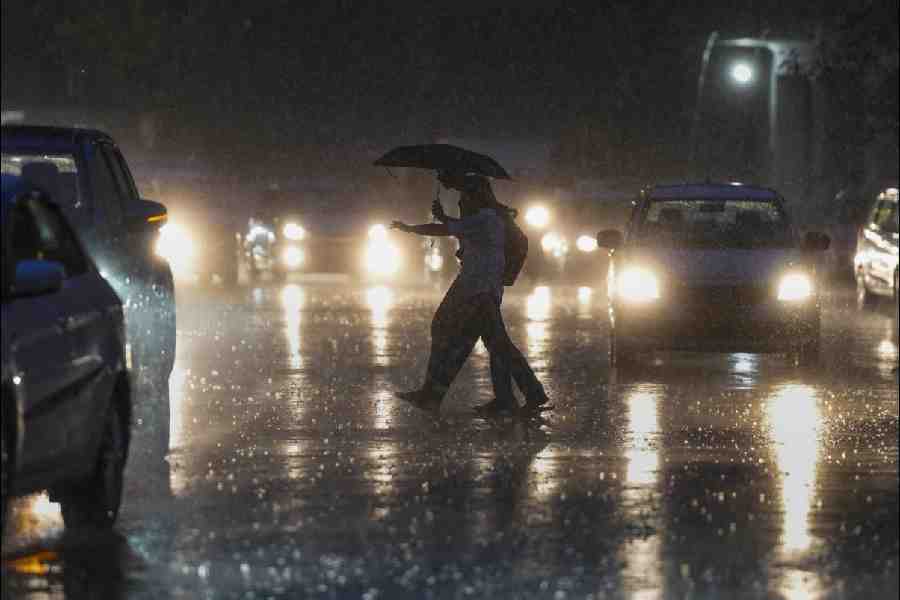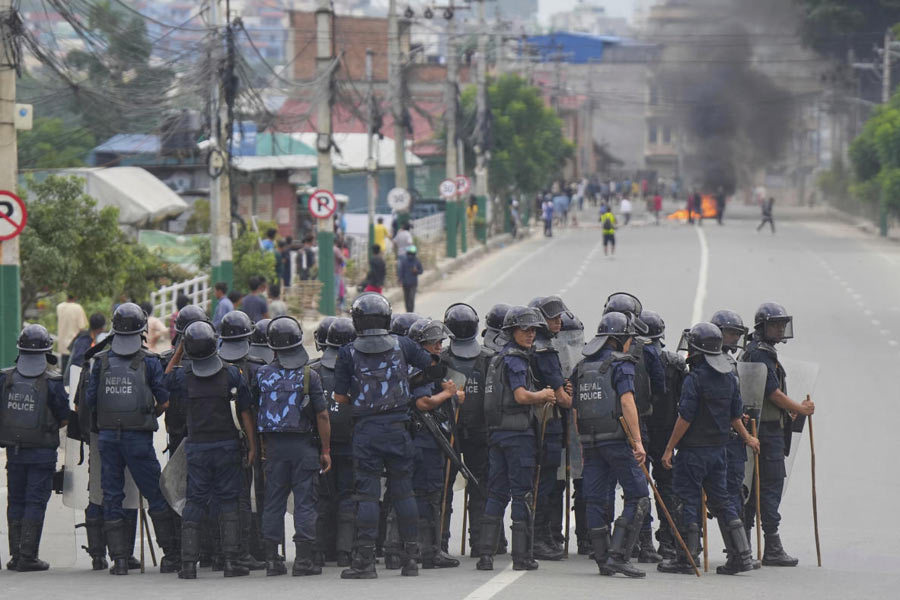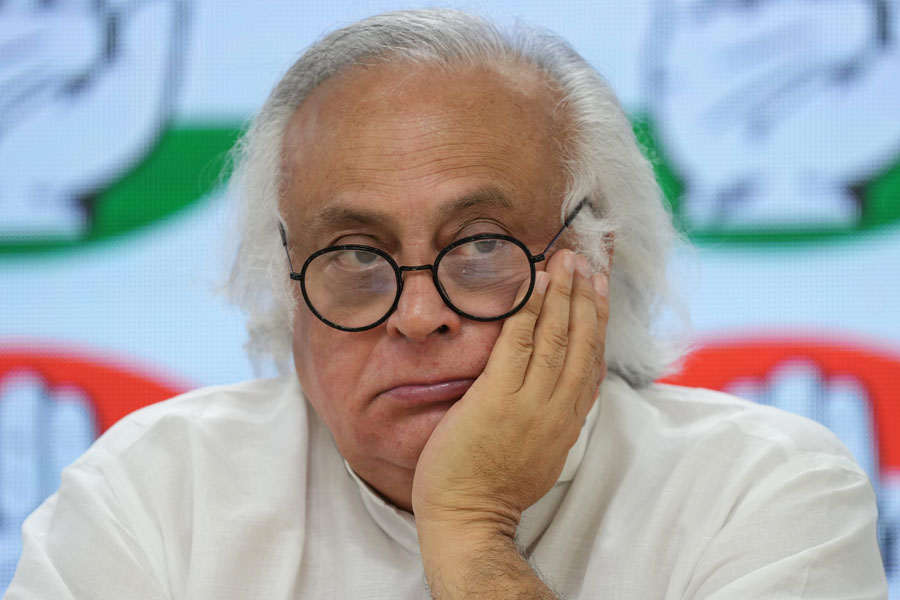 |
| Unorthodox phrase: Amaan Ali Bangash. (Photo: Tapan Das) |
Amaan Ali Bangash, elder son of Ustad Amjad Ali Khan, was in striking form at his sarod recital at the Science City auditorium on February 21. Throughout the actual playing time of approximately three hours and 26 minutes, there was not a moment of dullness. The ragas were ones Amaan Ali usually plays: Shri in the in the first half (118 minutes) and Bageshree in the second (46 minutes). Both are major ragas and were the ones he had played in the same order at a solo recital in Kala Mandir a couple of years ago. The tabla accompanist was Ustad Zakir Hussain in both the recitals. If the earlier recital was moving, this one was astounding because the young sarod player seemed to have grown up significantly between the two.
The earlier Shri alap was orthodox and evoked the mood of the raga in full. Last Saturday’s Shri alap was much faster in movement, less orthodox and displayed much more variety and novelty. The young maestro’s imagination here was in a free, cruising mode, risking the occasional unorthodox phrase but maintaining the raga mood and structure eventually. While orthodox canons prescribe that in Shri the emphasis should always be firmly on the rishav (flat 2nd) and the pancham (natural 5th), with the dhaivat (flat 6th) and the nishad (natural 7th) played as short as possible, Ustad Ali Akbar Khan in his later phase and Ustad Amjad Ali Khan in his recent recitals have made a long nishad the salient feature of the opening portion of their alaps in this raga. Amaan Ali followed the new style in the opening segment that was generally restricted to the five notes ma Pa Ni Sa re. He sounded the sustained gandhar (major 3rd) with the phrase Ni Sa re Ga just after the third minute and followed it up with the phrase ma Ga in the next moment. These are things not generally attempted in the opening part of the alap. It is more orthodox to end the phrases on the rishav i.e. Ni Sa re Ga re, Ga ma Ga re. But virtuosi take liberties; balancing them with the characteristic Shri catch phrase re Pa. Amaan did exactly this.
The section was developed with striking artistic maturity. Moreover, as the alap unwound, the notes were always in a flurry as prescribed by orthodox canons. The raga was in full bloom by the time he hit the taar saptak sadaj on the 18th minute. The sanchari ang final phase, which incorporated all the three saptaks, was even more impressive.
The 17-minute jod was innovative in the sense that it moved to broken-up slow-medium taan-like figures immediately after the start. This phase lasted a minute and then Amaan Ali was off to lapets, lad-lapets, slow-medium ladi taans and bolkari all firmly knitted into an excellently coherent melodic framework infused with raga character. The last five minutes of the jod threw forth some of the best ekhara and bol-ang tan-toda ever heard in Shri in recent times. Some three-stage ekhara taans in the sitar style were played at a pace difficult on any instrument — and not only that — played three times in succession with ease and accuracy.
The first two minutes of the nine-minute jhala section with which the alap ended were played in 3/4th rhythm in the true-blue Gwalior sarod gharana manner. Knitted into this were gamak-added phrases, in the manner of Amaan Ali’s father and guru Ustad Amjad Ali Khan. The two or three fast ekhara taans that were played next (perhaps to break away from this form of jhala and go to the normal 4/4 format) simply took one’s breath away.
The Shri gatkari was in jhaptal and after the initial gat elaboration there was some excellent deria taankari. In the sixth minute a Zakir Hussain chakradhar tehai drew applause and this was followed by a similarly fast bolkari-based taan-tihai by Amaan Ali that immediately drew applause from the packed house. The session of express bol-ang taankari in fast medium tempo and later in fast tempo, were the best heard in recent times. The taans swept around with such grace and maturity and featured fast bolkari of such pace that it put Amaan Ali in the class of Ustad Enayat Khan, sitar wizard and past master of fast bolkari. The manner in which he alternatively played jhala and express bol-ang taans in the final phase was innovative.
After the interval came a meend and emotion-packed alap in Bageshri that could count as the most impressive in the raga in recent times and so was the free flowing three-octave taankari to which four-minute the jod quickly graduated. The balance of melody and layakari in the pancham sawari tala gatkari (15 beats) was exceptional while the ati drut teental gatkari featured some memorable gat-barhat at a breathtaking tempo and some bol-ang taankari of matchless class and pace. The composition featured was of Amaan’s great-great-grand-uncle Murad Ali.


